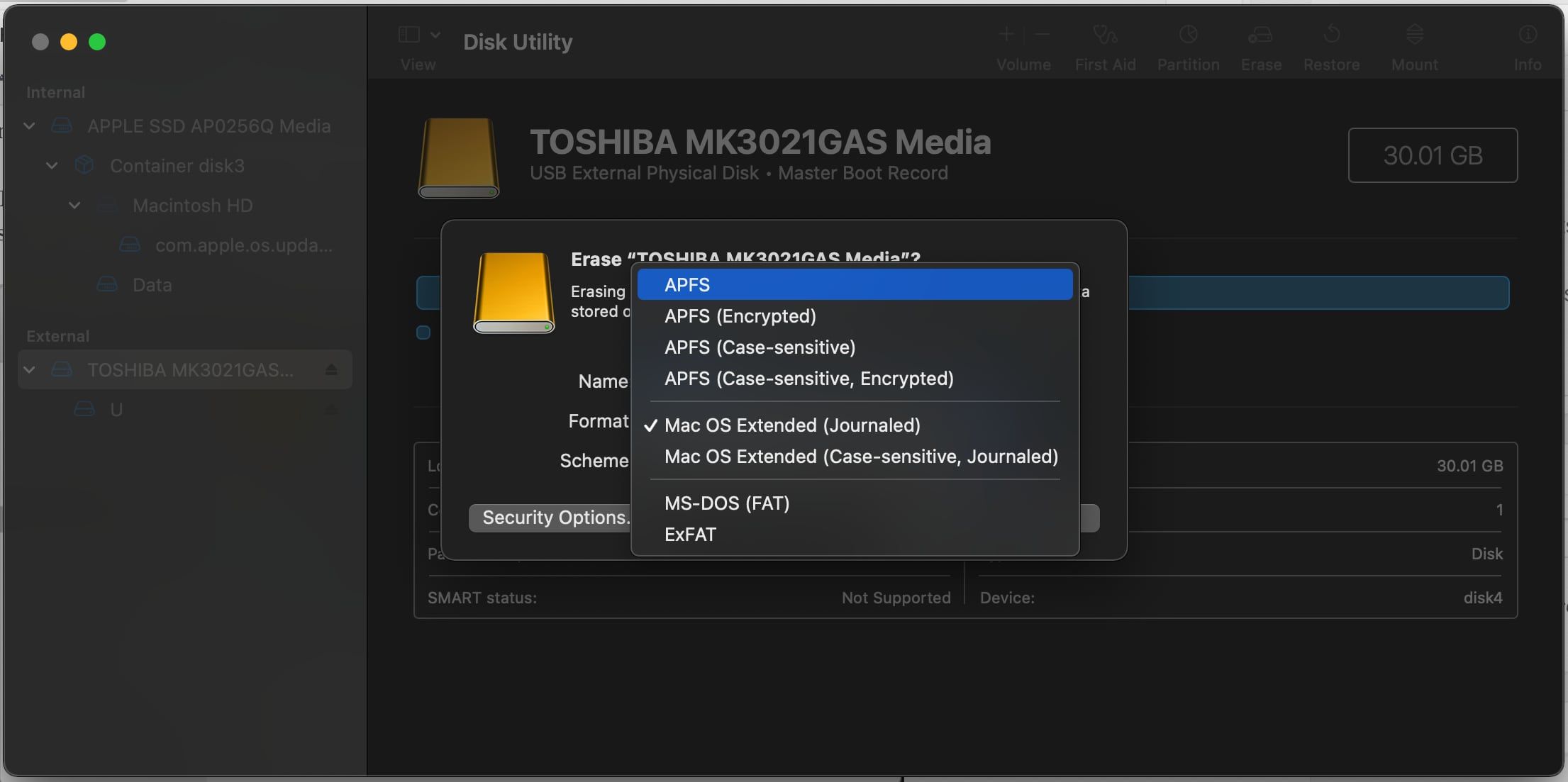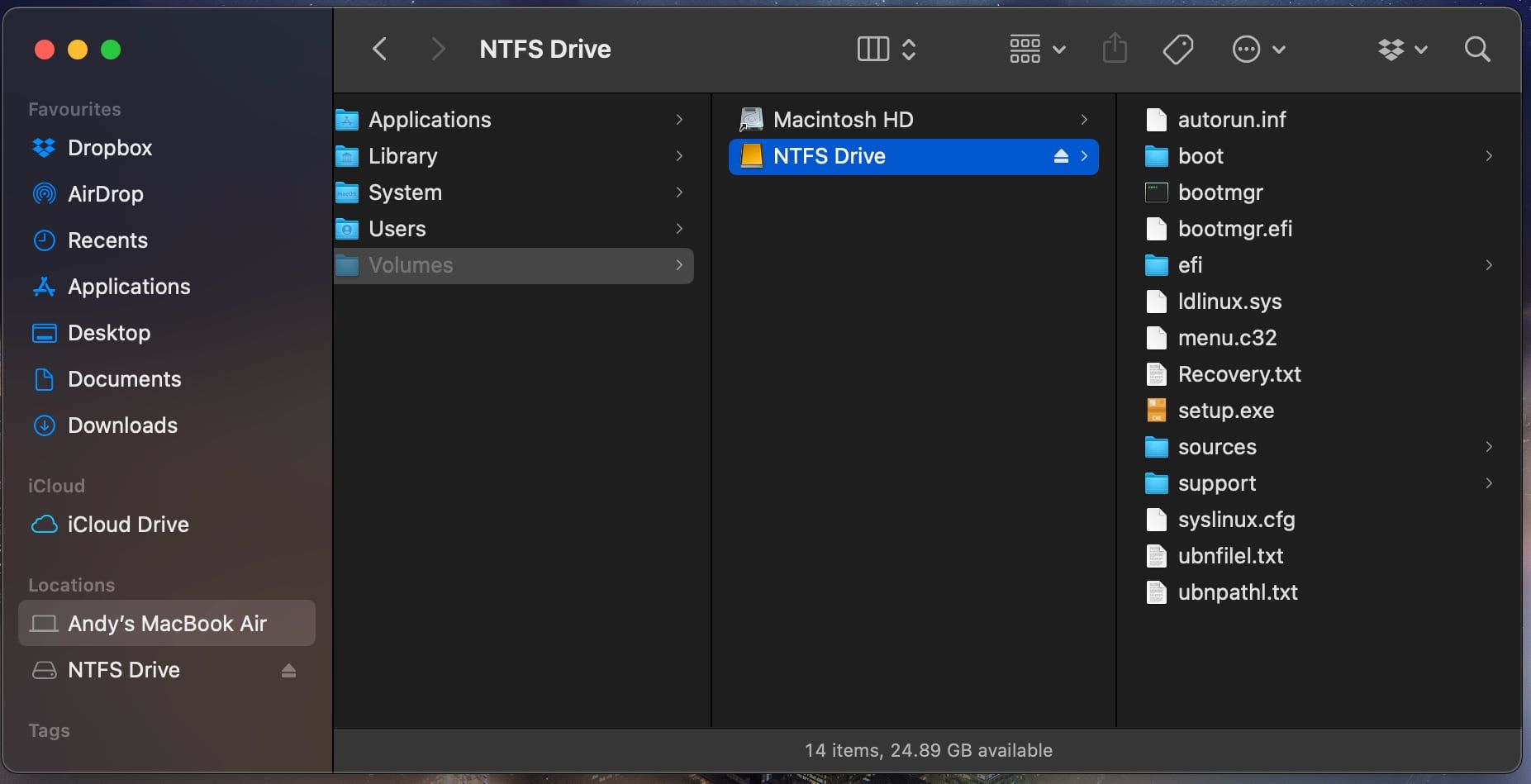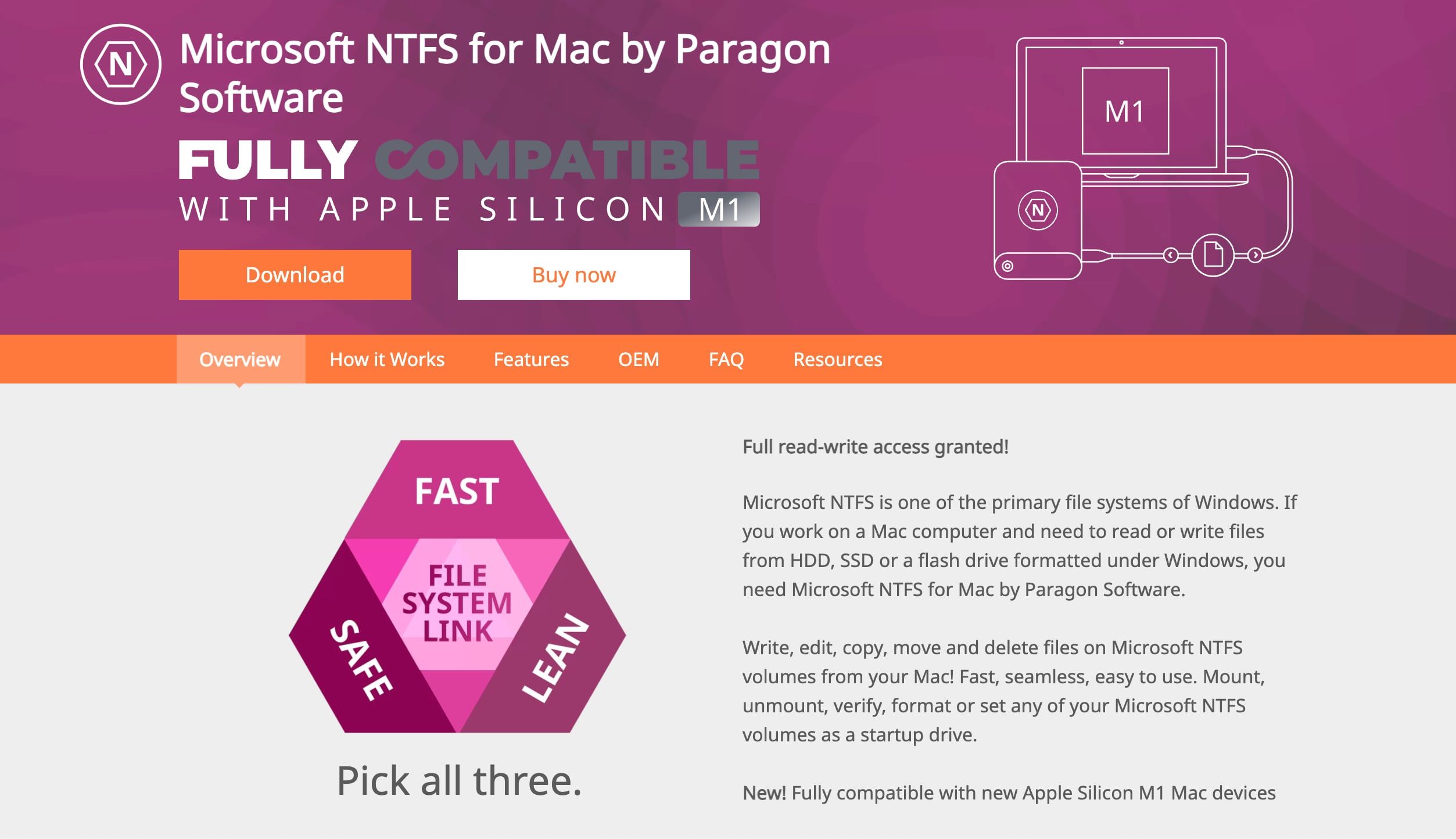Wd My Passport Turn Off Read Only
Sometimes when you connect an external hard drive to your Mac, you'll find that it's set up to read only. This happens because the drive is formatted with Microsoft'south NTFS filesystem, which macOS doesn't support by default. Fortunately, information technology's easy to set up and then that your external hard drive is no longer read only.
There are a number of means to unlock an external difficult drive on a Mac, from reformatting the bulldoze to installing software that allows you lot to write to NTFS volumes. For more than advanced users, there are also riskier, more experimental solutions.
Let'southward go started.
1. If Your Drive Is Blank
If you lot can't write to an external hard drive on Mac but the drive is blank, you're in luck. You can easily format it to whatever you need and motility on.
To begin, mount the disk on your Mac, and then open Disk Utility. At present select the drive in the sidebar and click Erase.

The best format option for an external drive depends on what you intend to use it for:
- Time Machine backup: If yous programme to use the drive to back upwardly your Mac with Fourth dimension Auto, yous'll want to format the drive to APFS for macOS 10.thirteen or subsequently. Set the Scheme to GUID Partition Map to make the choice show up. On older systems, choose HFS+, which shows up equally Mac OS Extended.
- Portable bulldoze: If yous're looking to create a portable drive to use with your Mac and other operating systems like Windows, cull exFAT. If you are merely working with Macs, APFS is the preferred option, unless you need to utilise the drive on a pre-ten.13 organisation.
- Working with sometime PCs: This is rare, merely if you'll employ the disk with an former Windows computer that doesn't support exFAT, you may have to cull the older Fat choice. In about cases, you shouldn't employ this as it limits drive sizes to less than 32GB.
2. If Y'all Demand a Old Set up
Warning! The following steps depict a method of enabling the experimental NTFS support in macOS. There is a very real chance that something could go wrong, resulting in a loss of data on the target drive. We recommend y'all exercise non rely on this method for writing to important volumes or as a long-term solution.
Sometimes you may need to write some files to a locked drive only once, and you lot can practice this with born Mac tools. Simply while macOS can read NTFS drives past default, its write adequacy hides backside a Terminal hack. You need to follow these instructions for each drive you want to write to.
Open up Terminal and type:
nano etc/fstab Then re-create this line into the file, replacing DRIVENAME with the actual name of the drive y'all want to admission:
Characterization=DRIVENAME none ntfs rw,auto,nobrowse Hit Ctrl + O to save the file, then Ctrl + X to quit Nano. Now disconnect and reconnect your bulldoze. Once it has remounted, it volition be available in /Volumes.
Y'all can just get there in Finder; click Go in the bill of fare bar and select Go to Folder. Enter /Volumes and click Go. You'll meet your drive listed here, and you lot tin can at present re-create files onto it.

3. A Free Open-Source Solution
Even if yous're comfortable using Terminal, no one wants to edit a preference file every time they deal with a new bulldoze. If you're in It and bargain with Windows drives regularly, you may demand a better pick. One of the most popular solutions is an open-source product: macFUSE for macOS.
Download macFUSE to get started. The program is a handler; information technology doesn't contain annihilation to mount and read the files themselves. You lot'll demand a couple of extra tools to consummate the job, available in a Mac Homebrew package called NTFS-3G.
First, install Homebrew by pasting this line into the Terminal:
/bin/bash -c "$(coil -fsSL https://raw.githubusercontent.com/Homebrew/install/HEAD/install.sh)" One time you lot run the commands to install Homebrew, and you get a confirmation in Final, you demand to install the NTFS-3G package. That is another single command:
mash install ntfs-3g Sometimes Terminal doesn't recognize that you take already installed the macFUSE package. If that happens, run this command besides:
brew install --cask macfuse Yous'll then be prompted to reboot your Mac. In one case you've done that, try re-running the NTFS-3G command.
How to Write to an NTFS Drive With NTFS-3G
NTFS-3G enables your Mac to write to NTFS drives, but it is non automatic. You demand to run a few actress commands to get it working.
First, find the address of your mounted read-merely bulldoze. You tin get this in the Terminal using the control:
diskutil list Y'all demand to run the post-obit commands each time that you want to mount a drive with write permissions. Replace /dev/disk1s1 with the drive address that you constitute above:
sudo mkdir /Volumes/NTFS Then:
sudo /usr/local/bin/ntfs-3g /dev/disk1s1 /Volumes/NTFS -o local -o allow_other -o auto_xattr -o auto_cache If you lot don't want to run these commands each time, there's a fix. You can boot your Mac into single-user way and supervene upon the congenital-in Mac NTFS tools with NTFS-3G. There are some warnings about security on the projection site; you tin cheque out the steps to enable it on the programmer's GitHub page.
The devs make information technology clear that this opens upward your Mac to potential exploitation, so this pace is not for the faint of centre.
4. A Simple, Paid Option
The solutions nosotros've described higher up are pretty technical. If you'd rather simply click your mouse a few times to get this working, you lot tin apply a paid third-political party app to simplify the entire procedure.
At that place are some different choices, but the longtime favorite is Paragon Software's NTFS for Mac. Information technology costs $19.95 per Mac license, though you get a discount for buying a second or third license at the same time. You can exam drive the software with a ten-solar day trial as well, and it's fully compatible with Apple silicon.

It'south a elementary install, which and so provides a menu bar item that shows your NTFS drives. Meliorate nonetheless, your NTFS drives now show upwards in Finder normally, and y'all can care for them like any other bulldoze.
Download: Microsoft NTFS for Mac by Paragon Software ($19.95)
Tuxera NTFS for Mac is another program that's worth looking at. Information technology's congenital on top of the open standard we used in a higher place, NTFS-3G. The licensing is a chip simpler, as yous pay $15 to apply information technology on iii Macs at the same fourth dimension.
With a 15-day free trial, you can put the program through its paces earlier shelling out any coin. Rather than a menu bar particular, Tuxera installs as a preference pane. You lot can format drives from there, just not much else. Similar Paragon, you can use Finder to work with the drive.
Download: Microsoft NTFS for Mac by Tuxera ($fifteen for three computers)
Solve Other Mac External Drive Problems
Both paid options offer a painless mode to mount an NTFS read-simply drive on your Mac and brand it writable. The open up-source and Terminal options are more than work, and you shouldn't rely on experimental support full-fourth dimension. You can likewise write as much data as you lot need to and from your drives while trialing both paid options.
But having a read-only drive is not the simply external disk problem you tin can face on a Mac. Sometimes y'all can mountain an external bulldoze and it isn't even recognized. Take a await at our guide on how to get your external bulldoze to show upwards on a Mac for tips on how to solve that issue.
About The WriterSource: https://www.makeuseof.com/tag/solving-the-read-only-external-hard-drive-problem-on-your-mac/

0 Response to "Wd My Passport Turn Off Read Only"
Post a Comment